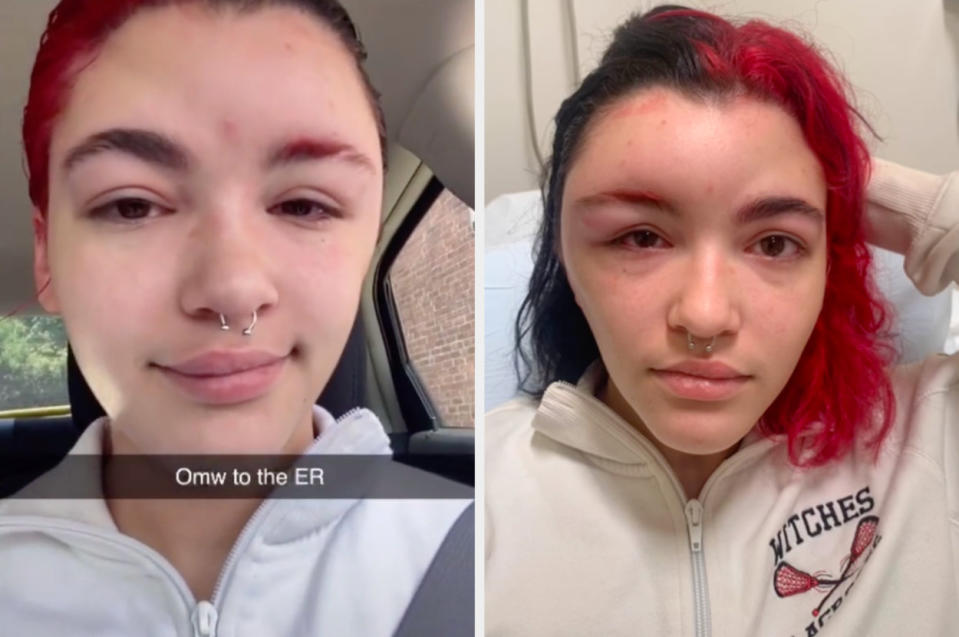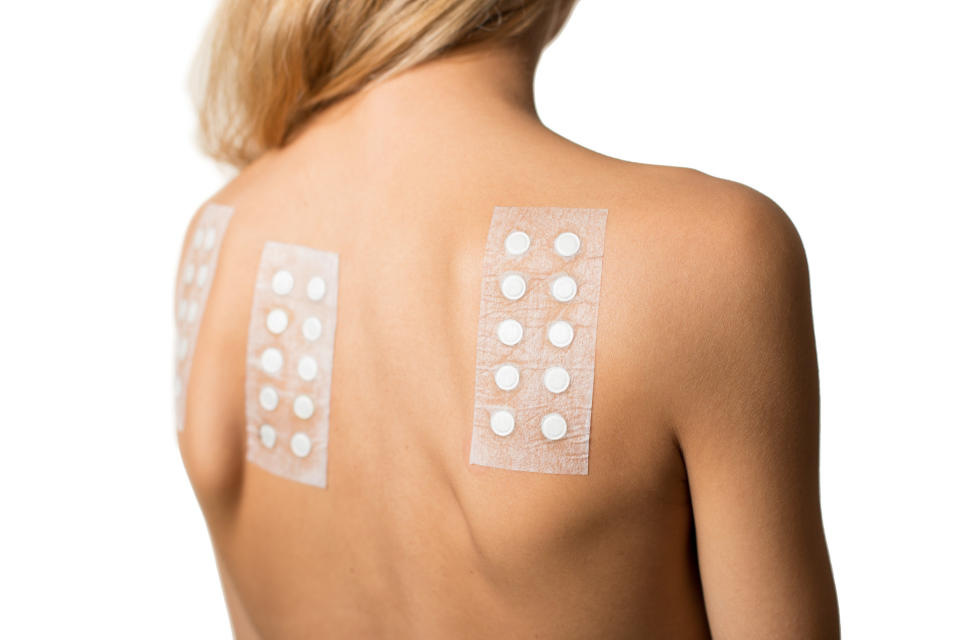A Woman On TikTok's Face Blew Up Like A Balloon After She Dyed Her Hair — Here's Why It Happened
BuzzFeed
5 min read
My introduction to hair dye allergies was through this poor Swedish boy who became a meme after a schoolmate uploaded his shocking health scare to Twitter.
It wasn't long before his face blew up (pun intended) all over the internet.
I filed this in my brain under "Scary things that probably rarely happen, so you shouldn't be paranoid" and forgot about it. That is, until the following videos of two people having the same exact reaction showed up on my TikTok For You page:
@riannrenee The time an allergic reaction turned me into the sloth from The Goonies ???? #allergicreaction #ohno #fypシ #fail #funnyvideo #summervibes #onvacation
? Oh No - Kreepa
The second video, posted by @ser.gaya, has over 25 million views. Her name is Seraya Ellison, and she's a 19-year-old from Massachusetts. I decided to reach out to her to hear more about her terrifying experience.
"I dyed half my hair black on July 15. I’ve been dyeing my own hair for 13 years, so I am used to my hairline and ears getting a little irritated when using cheaper dyes. I did not pay too much mind to it, assuming the dye got onto my skin and would take a few hours to heal itself, like it usually has in the past," Seraya told BuzzFeed. "The next morning, I woke up to my boyfriend yelling and asking me what happened to my face. I looked into the mirror and saw that the right side of my forehead was swelling."

"It was only minor swelling at the time, so I took Benadryl and started to get ready for work. I knew I needed medical attention when my mother came home from work at 1 p.m. and started panicking. She rushed me to the emergency room almost immediately, where my face and eyes were getting even bigger by the minute."
Besides the swelling, Seraya's symptoms included scalp tenderness, chemical burns, and numbness in her face. When she arrived at the emergency room, a doctor told her they had "never seen anything like this before." A dermatologist who was brought in prescribed Seraya serum for her scalp burns, but nothing for the swelling. She and her mother decided to drive to an urgent care two cities away, where they finally received proper care.

@ser.gaya / Via tiktok.com
"I was given steroid pills that I would need to take twice daily for four days, and they also recommended to take Benadryl and use ice packs," she said. Seraya's official diagnosis was that she'd developed an allergy to paraphenylenediamine — otherwise known as PPD. This is an ingredient found mostly in darker shades of hair dye.

Artur Mroszczyk / Getty Images / EyeEm
The majority of Seraya's swelling, thankfully, went down after two days. But when we last spoke, her eye was not yet back to its normal size. "What happened to me was really scary to experience, and I'm so lucky that my reaction wasn’t as bad as it could have been," she said. "I wanted to share this video with TikTok to help advise people to be very careful with directions when dyeing their own hair, and make sure salons do patch tests with consultations if the option is given."
To glean more insight on PPD allergies, I reached out to two dermatologists: Dr. Lindsey Zubritsky and Dr. Ranella Hirsch, who are based in Pennsylvania and Massachusetts respectively. Zubritsky said Seraya's experience can be described as a "severe allergic reaction." She told BuzzFeed that biologically, "our body is programmed to respond to dangerous foreign substances like bacteria and viruses by producing an immune response such as antibodies. In some people, our body responds to benign, nonharmful things like bee stings and peanuts (in this case, hair dye) in an exaggerated manner, leading to symptoms like swelling, hives, throat swelling, and low blood pressure."
Zubritsky said the National Institutes of Health has estimated that 6.2% of people in North America have experienced a reaction to PPD. "PPD is found in 90% of hair dyes, even organic ones," she said. "Most people do not have an issue with PPD. However, if you do have an allergic reaction to PPD, it is advisable to also avoid things like black henna tattoos, black rubber, [mechanical] oils, greases, gasoline, photography developer, or dark-colored cosmetics."

Lena Iliopoulou / Getty Images / EyeEm
Both Zubritsky and Hirsch noted the importance of "patch testing" before using certain products in order to prevent an extreme reaction from occurring. "At home, it's just testing new products by applying a small amount to the inner forearm or just behind the ear and seeing over time if it causes a reaction," Hirsch said. "Patch tests at allergy clinics are where they apply a panel of known allergens to you (usually on your back) to determine what you are allergic to."

Photorobot / Getty Images / iStockphoto
Hirsch warned that if you have even a mild allergic reaction to hair dye containing PPD, you should avoid using it again. "With the exposure, the next reaction can be worse," she said. Zubritsky noted that PPD was declared the contact allergen of the year in 2006 by the American Contact Dermatitis Society. "Just because you have used PPD/hair dye in the past does not mean you can’t develop an allergy to it with time," she said.
CBS